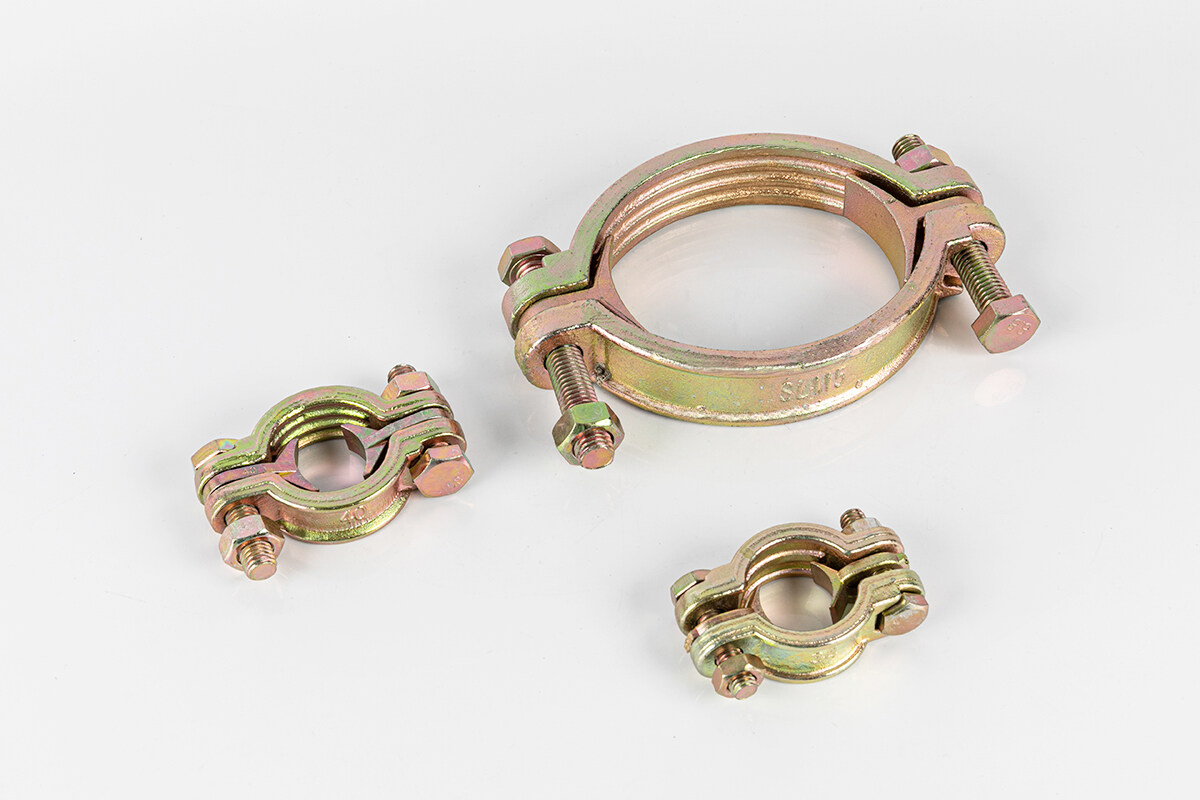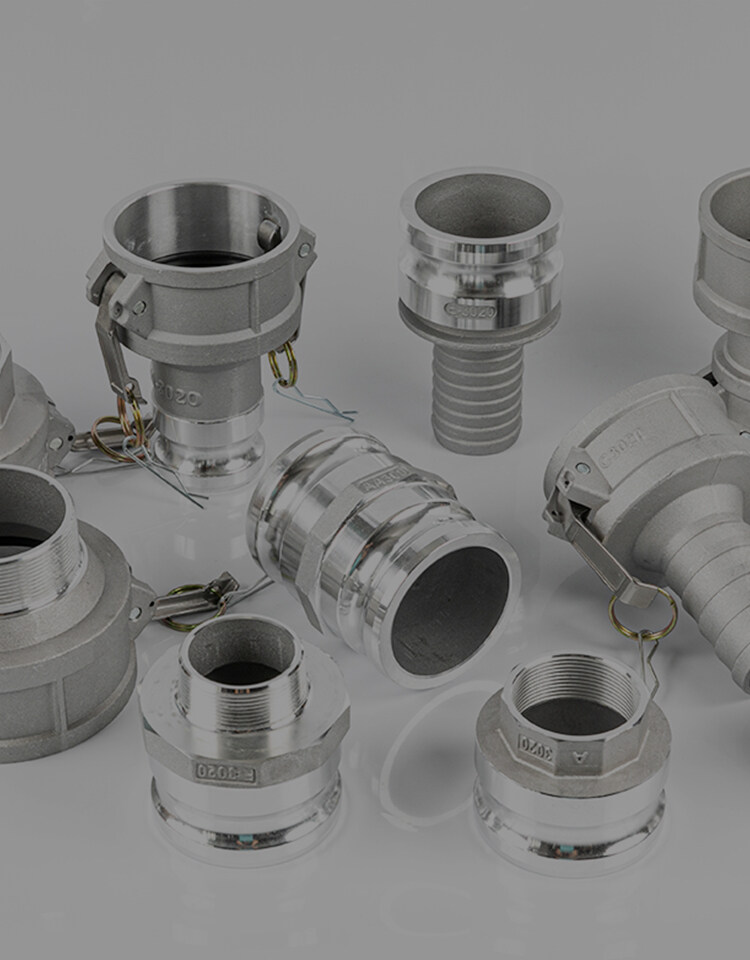이메일 형식 오류
emailCannotEmpty
emailDoesExist
pwdLetterLimtTip
inconsistentPwd
pwdLetterLimtTip
inconsistentPwd

소식
여기에서 표현하려는 텍스트를 설명 할 수 있습니다.

The Comprehensive Guide to Double Coupler and Swivel Coupler: Essential Components for Versatile Connections
In the world of construction, industrial applications, and even DIY projects, the ability to create secure and versatile connections is paramount. This is where the double coupler and swivel coupler come into play. These components are crucial for ensuring stability and flexibility in various structures and systems. In this comprehensive guide, we will delve into the world of double coupler and swivel couplers, exploring their uses, benefits, and the various types available, including the swivel quick connect air coupler, threaded rod swivel coupler, swivel safe coupler, and options from China swivel coupler manufacturers and suppliers.
Understanding Couplers: The Basics
Couplers are the unsung heroes of construction and industrial applications, serving as the critical connectors that join various structural elements. These devices come in myriad forms, each tailored to specific requirements and load-bearing capacities. At their core, couplers must provide a secure connection that can withstand the environmental stresses and strains of their application, whether that be supporting the weight of a building’s scaffolding or maintaining the integrity of a high-pressure pneumatic system.
The Role of Double Couplers
Definition and Functionality:
Double couplers, also known as right-angle couplers, are designed to connect two pipes or tubes perpendicular to each other. They are typically made of robust materials like forged steel and are equipped with bolts or rivets that clamp the tubes securely in place. The design ensures that the connected tubes do not slip or disconnect under load, which is crucial for maintaining the structural integrity of scaffolding and other frameworks.
Common Applications and Uses:
These couplers find their primary use in scaffolding, where they provide the essential right-angle connections between the vertical and horizontal tubes. However, their utility extends to other areas such as event staging, temporary structures, and even in set designs for film and theater, where reliability and ease of assembly and disassembly are valued.
Installation and Safety Considerations:
When installing double couplers, it’s important to follow manufacturer guidelines and local safety regulations. The couplers should be inspected for any damage or wear before use, and should be tightened to the specified torque to ensure a secure fit. Regular inspections are necessary to maintain safety, especially in dynamic environments where movement could loosen the connections over time.
The Versatility of Swivel Couplers
Swivel Coupler Mechanics:
Swivel couplers are engineered to offer a pivot point, allowing the connected elements to rotate relative to each other. This rotation can be locked at a desired angle, providing versatility in the angle of connection, which is not possible with fixed double couplers. The swivel mechanism is typically a bolted joint that can be tightened to secure the angle or left to move freely for dynamic applications.
Advantages of Using Swivel Couplers:
The primary advantage of swivel couplers is their flexibility. They can accommodate a range of angles, which is particularly useful in custom or irregular structures where non-standard angles are required. This adaptability makes swivel couplers a favorite in the construction of stages, temporary stands, and complex scaffolding.
Different Types of Swivel Couplers:
There are several types of swivel couplers, each designed for specific applications. For example, some are designed for heavy-duty use with a larger load capacity, while others are made for lighter applications where ease of use and speed of connection are more important.
Specialized Swivel Couplers for Specific Needs
Swivel Quick Connect Air Coupler:
In pneumatic systems, the swivel quick connect air coupler is a game-changer. It allows for rapid connection and disconnection of air tools, which is essential in environments where efficiency and time savings are critical. The swivel feature also reduces the strain on air hoses, preventing kinks and extending the life of the hose.
Threaded Rod Swivel Coupler:
For applications requiring the connection of threaded rods, the threaded rod swivel coupler is indispensable. It allows for the precise alignment of rods at varying angles, which is crucial in the construction of support structures like falsework or formwork in concrete construction.
Swivel Safe Coupler:
Safety is paramount in any construction or industrial setting, and the swivel safe coupler is designed with this in mind. It includes features such as locking pins or safety latches to prevent accidental disconnections, which could lead to structural failures or injuries.
Global Perspectives: China Double Coupler and Swivel Coupler Manufacturing
The Rise of China in Coupler Manufacturing:
China’s manufacturing sector has seen rapid growth, and this includes the production of swivel couplers. Chinese factories have invested heavily in technology and quality control to produce couplers that meet international standards.
Quality and Innovation from Chinese Suppliers:
Chinese swivel coupler suppliers are not just competing on price; they are also innovating. Many have introduced new designs that improve on the functionality and safety of traditional couplers, making them attractive options for buyers around the world.
How to Source Couplers from China:
Sourcing from China requires due diligence. Buyers should look for suppliers with a proven track record, certifications, and the ability to provide samples. It’s also important to consider communication, lead times, and the ability to support large orders.
Research Potential Suppliers:
Use online B2B marketplaces like Alibaba or Made-in-China to find suppliers.
Look for suppliers with high ratings, positive customer feedback, and a history of international trade.
Evaluate Certifications and Compliance:
Check if the supplier has the necessary certifications, such as ISO standards, which indicate quality management processes.
Ensure the products comply with international safety and quality standards relevant to your region or industry.
Request Samples:
Before placing a large order, request samples to assess the quality of the couplers firsthand.
Test the samples under conditions similar to those they will face in their intended application.
Visit the Factory:
If possible, visit the supplier’s manufacturing facility to get a better understanding of their production capabilities and quality control measures.
Factory visits can also help establish a stronger business relationship.
Negotiate Terms:
Discuss payment terms, minimum order quantities, lead times, and shipping arrangements.
Consider using a trade assurance service to protect your transaction.
Quality Control:
Set up a quality control process, either by hiring a third-party inspection service or by having your own quality control team on the ground.
Inspect products before they are shipped to avoid costly returns or replacements.
Choosing the Right Coupler for Your Project
Factors to Consider:
When selecting a coupler, consider the following factors:
Project Type: The nature of your project will dictate the type of coupler needed. For example, heavy construction will require more robust couplers than a temporary event structure.
Environment: Environmental conditions such as exposure to weather, chemicals, or extreme temperatures can affect the performance of a coupler.
Load Requirements: Understand the load that the coupler will need to bear. This includes both the weight and the type of load, such as static, dynamic, or impact loads.
Load-Bearing Capacity and Material Selection:
Assessing the load-bearing capacity is critical:
Calculate the Load: Determine the maximum load the coupler will need to support, including any safety factors.
Material Strength: Choose materials that can withstand the calculated load. Common materials include forged steel, aluminum, and composites.
Durability: Consider the durability of the material in the specific environment it will be used.
Compatibility and Interoperability:
Ensure compatibility with existing systems:
Dimensional Compatibility: Check that the coupler fits the tubes, rods, or other elements it will connect.
System Integration: Verify that the coupler can be integrated into the larger system without causing issues or requiring extensive modifications.
Installation Tips and Best Practices
Preparing for Installation:
Before installing couplers, follow this checklist:
Inspect the Couplers: Check for any defects or damage that could affect performance.
Gather Tools and Equipment: Ensure you have the correct tools for installation, including torque wrenches and levels.
Review Instructions: Read the manufacturer’s installation instructions thoroughly.
Step-by-Step Installation Guide:
To install double and swivel couplers:
● Align the tubes or rods to be connected.
● Place the coupler over the ends, ensuring a snug fit.
● For double couplers, align at a 90-degree angle; for swivel couplers, adjust to the desired angle.
● Tighten the bolts or rivets to the manufacturer’s specified torque.
● Double-check the angle and security of the connection.
Maintenance and Inspection:
Regular maintenance and inspection are vital:
Routine Checks: Regularly inspect couplers for signs of wear, corrosion, or damage.
Cleaning: Keep couplers clean from debris and dirt that could compromise their integrity.
Lubrication: Apply lubricant to moving parts of swivel couplers to ensure smooth operation.
Conclusion:
In conclusion, selecting the right double coupler and swivel coupler is crucial for the safety and success of your project. By sourcing quality products, considering the specific needs of your application, and adhering to best practices for installation and maintenance, you can ensure reliable and durable connections. Remember, the longevity of your structure or system depends on the attention to detail you apply throughout the selection, installation, and maintenance processes.

